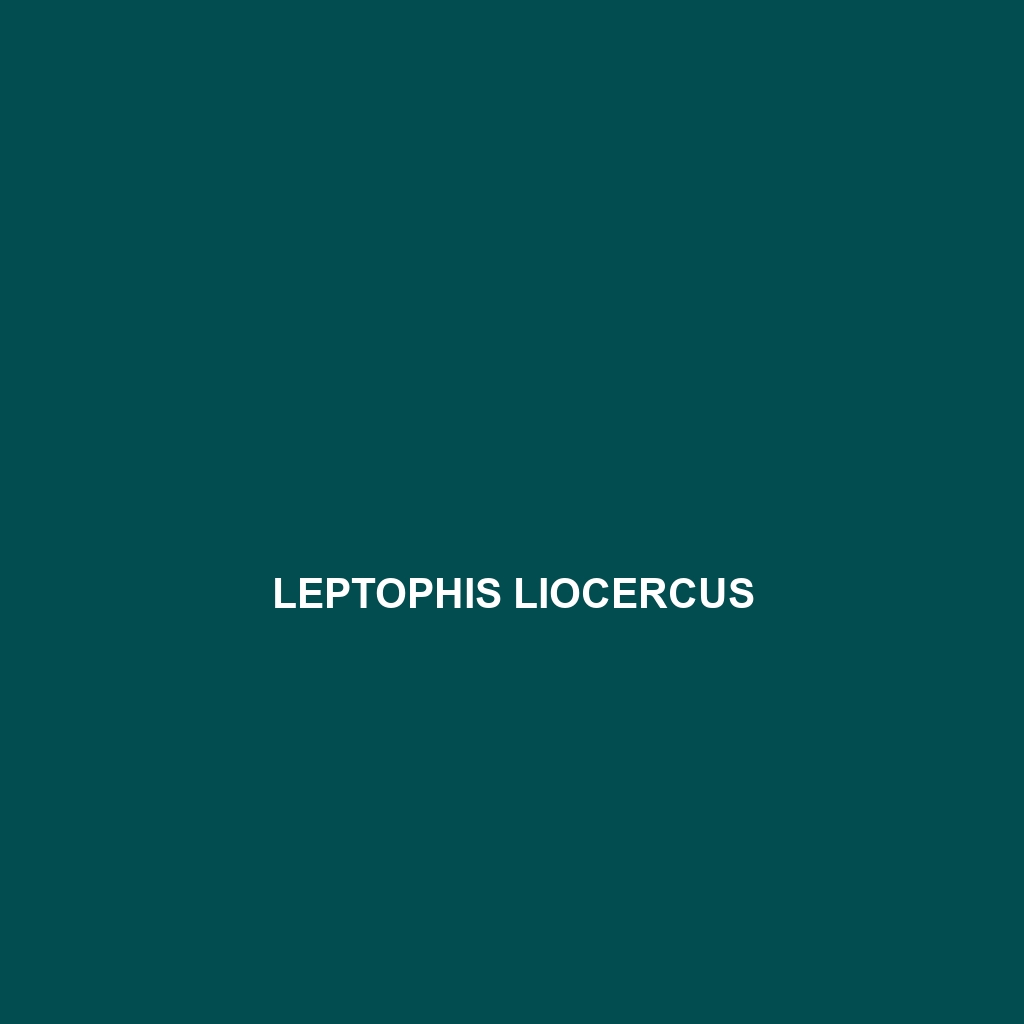Common Name
Leptophis liocercus
Scientific Name
Leptophis liocercus
Habitat
Leptophis liocercus, commonly known as the green parrot snake, inhabits a variety of environments primarily found in Central America, specifically in regions such as southern Mexico, Belize, Guatemala, and Honduras. This species favors humid areas including rainforests and subtropical forests, thriving where vegetation is lush and dense. This high humidity level supports their lifestyle and allows them to maintain optimal hydration, which is crucial for their survival. They can also occasionally be found in savannas and areas close to water bodies, where the temperature is moderate. The marine habitats nearby are often frequented during the dry season, showcasing their adaptability to various environmental conditions.
Physical Characteristics
The Leptophis liocercus is a slender, agile snake that can reach lengths of approximately 1.2 to 2.1 meters (4 to 7 feet). It is characterized by its vibrant green dorsal coloration, which helps it blend seamlessly with the foliage of its rainforest habitat. The ventral side is typically lighter, often yellow or white, providing a stark contrast against the dorsal surface. One unique feature of the green parrot snake is its large, expressive eyes, which are crucial for hunting and navigating through its arboreal environment. Its smooth scales and elongated body are well-suited for climbing, allowing excellent maneuverability through trees and shrubs.
Behavior
Leptophis liocercus exhibits distinct and fascinating behaviors that are important for its survival. This snake is primarily nocturnal, hunting for food during the night when it is most active. During the day, it often rests on branches or in foliage, camouflaging itself from predators. Mating rituals typically occur in the early months of the rainy season, where males display courtship behaviors, including elaborate movements and body postures to attract females. Social interactions are minimal, as these snakes are generally solitary, only coming together during the mating season.
Diet
The diet of Leptophis liocercus is predominantly comprised of arboreal prey, including a variety of birds, small rodents, and insects, classifying it as a carnivore. Their hunting technique often involves patiently waiting for unsuspecting prey to approach, after which they strike with incredible speed. The ability to hunt and consume both small mammals and avian species showcases the versatility and effectiveness of their predatory skills. Their feeding patterns can vary according to habitat availability and prey abundance, adapting to changes in their ecosystem.
Reproduction
The reproductive cycle of Leptophis liocercus is marked by a fascinating courtship phase that begins when temperatures rise in the rainy season. Mating usually takes place from April to June, with females laying clutches of up to 12 eggs in suitable locations such as leaf litter or decaying vegetation. The incubation period lasts around 60 to 70 days, after which the hatchlings emerge. Offspring are known to be independent from birth, which is an adaptation that increases their chances of survival in a predator-rich environment. Parental care is absent in this species, further emphasizing their solitary nature.
Conservation Status
The green parrot snake is currently classified as Least Concern by the IUCN Red List, indicating that it does not face any immediate threats to its population levels. However, habitat destruction due to deforestation and agricultural expansion poses a potential risk to its habitats, while climate change may affect food availability and nesting sites. Conservation efforts are needed to preserve its natural environments and mitigate the impacts of human activities.
Interesting Facts
One interesting fact about Leptophis liocercus is its remarkable ability to mimic the appearance of venomous snakes, which serves as a defense mechanism against potential threats. Additionally, this species is known to exhibit a unique gliding ability when descending from trees, allowing it to navigate its arboreal habitat effectively. This gliding behavior is particularly noticeable when escaping predators or maneuvering to capture prey.
Role in Ecosystem
Leptophis liocercus plays a crucial role in its ecosystem as both a predator and a prey species. Its hunting habits help control populations of various small mammals and birds, contributing to the balance within its food web. As a prey item for larger snakes, birds of prey, and mammals, it is also an integral part of the dietary needs of many other species. By maintaining these relationships, the green parrot snake supports the overall health and biodiversity of its rainforest habitat, underscoring its importance in ecological dynamics.
